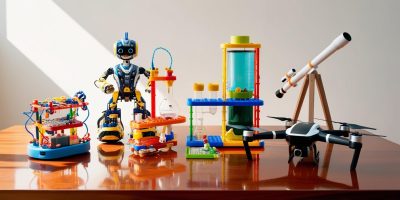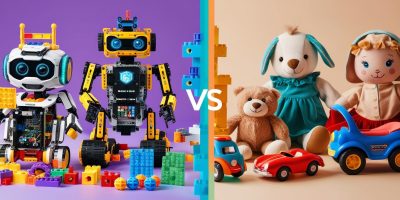STEM toys are everywhere these days—and for good reason! They spark curiosity, teach problem-solving, and help kids build a solid foundation in science, technology, engineering, and math. But one big question stumps a lot of parents:
What’s the right age to introduce STEM toys?
The short answer: As early as 1 year old. The long answer? It depends on your child’s development stage—and the type of toy.
Let’s break it all down.
Why Starting Early Matters
STEM skills are like muscles: the earlier you start using them, the stronger they get. Research shows that early exposure to STEM-based play helps improve:
- Cognitive development
- Fine motor skills
- Critical thinking
- Spatial awareness
- Language and communication
And here’s the best part—your child doesn’t even need to know they’re “learning.” With the right toy, it just feels like playtime.
🔗 Source: National Association for the Education of Young Children (NAEYC)
Ideal STEM Toys by Age Group
Ages 1–2: Sensory and Cause-Effect Play
At this age, kids are just starting to explore the world around them. Look for toys that:
- Light up or make sounds when pressed
- Stack or sort
- Encourage motion or interaction
Top picks:
- Tobbles Neo by Fat Brain Toys
- Fisher-Price Laugh & Learn Smart Stages Puppy
Ages 3–4: Sorting, Building, and Pretend STEM
Kids this age love using their hands and imagination. They’re ready for:
- Magnetic tiles
- Simple coding toys (like Code-a-Pillar)
- Counting games
Top picks:
- Magna-Tiles
- Learning Resources Coding Critters
Ages 5–7: Problem Solving and Beginner Engineering
Now’s the time to introduce:
- Basic robotics kits
- Beginner circuits
- Experiment-based kits
Top picks:
- Snap Circuits Jr.
- National Geographic Science Kits
Ages 8–10: Advanced Builds and Real Science
This is where things get serious—and fun! Think:
- Build-your-own robots
- Computer programming games
- Chemistry sets
Top picks:
- LEGO Boost Creative Toolbox
- Kano PC kits
- MEL Chemistry Subscription
Ages 11+: Real-World Application
Older kids benefit from STEM toys that let them dive deep into:
- Engineering challenges
- Coding languages
- Robotics competitions
- DIY kits for teens
Top picks:
- Arduino Starter Kit
- Raspberry Pi projects
- Gravity Maze by ThinkFun
Tips for Choosing the Right STEM Toy
- Match the toy to your child’s interest and development stage
- Look for open-ended toys that encourage creativity
- Check if the toy grows with your child (multi-age level kits are gold!)
- Read reviews and safety ratings
Remember: The “perfect” toy isn’t the flashiest—it’s the one that keeps your child engaged and thinking.
What If My Child Isn’t into STEM?
That’s okay! You don’t need to force it. Try blending their interests with STEM. For example:
- A dinosaur lover? Try a fossil dig kit.
- Into art? Try a circuit-based art project.
- Loves stories? Try story-based coding games.
STEM is more than just math problems—it’s creativity, logic, and discovery wrapped into one.
Final Thoughts: Start Early, Grow Smart
You can start STEM play as early as age one—with toys that match your child’s learning stage. The key is choosing options that are fun, age-appropriate, and mentally stimulating. The earlier you introduce STEM toys, the better the foundation you’ll build for lifelong learning.





